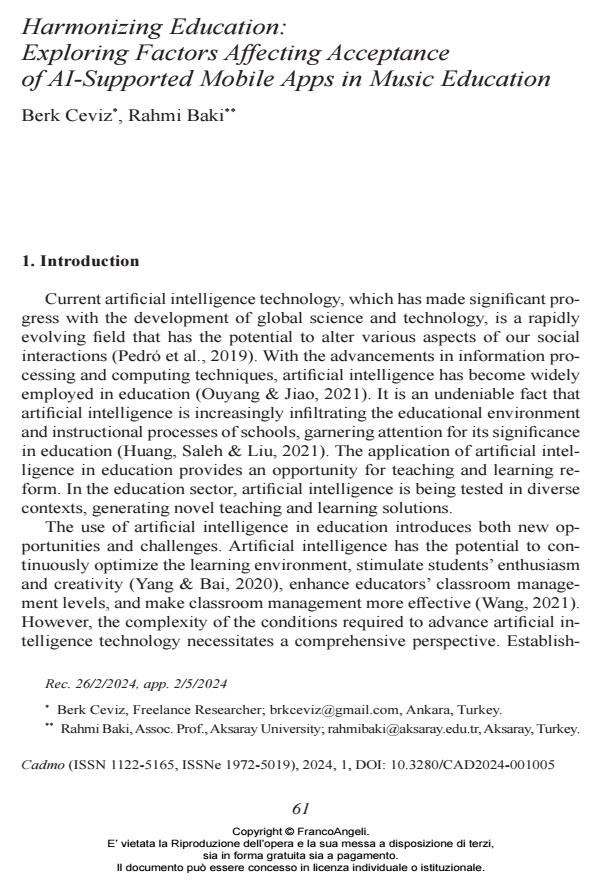Harmonizing Education: Exploring Factors Affecting Acceptance of AI-Supported Mobile Apps in Music Education
Journal title CADMO
Author/s Berk Ceviz, Rahmi Baki
Publishing Year 2024 Issue 2024/1
Language English Pages 25 P. 61-85 File size 241 KB
DOI 10.3280/CAD2024-001005
DOI is like a bar code for intellectual property: to have more infomation
click here
Below, you can see the article first page
If you want to buy this article in PDF format, you can do it, following the instructions to buy download credits

FrancoAngeli is member of Publishers International Linking Association, Inc (PILA), a not-for-profit association which run the CrossRef service enabling links to and from online scholarly content.
Keywords: Artificial Intelligence, Sustainable Education, Mobile Education Applications, Technology Adoption, Instrumental Education, Music Theory Instruction.
Berk Ceviz, Rahmi Baki, Harmonizing Education: Exploring Factors Affecting Acceptance of AI-Supported Mobile Apps in Music Education in "CADMO" 1/2024, pp 61-85, DOI: 10.3280/CAD2024-001005